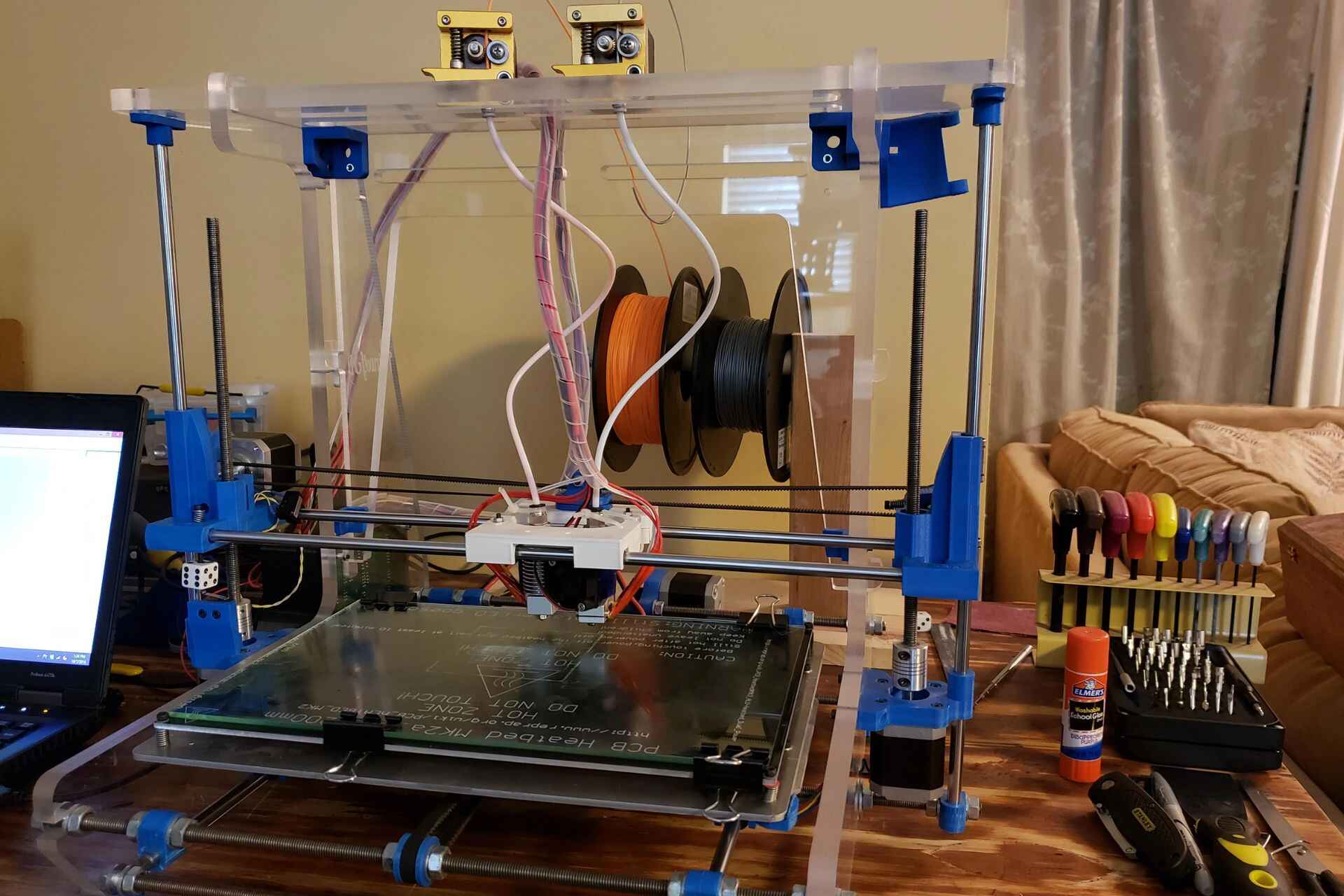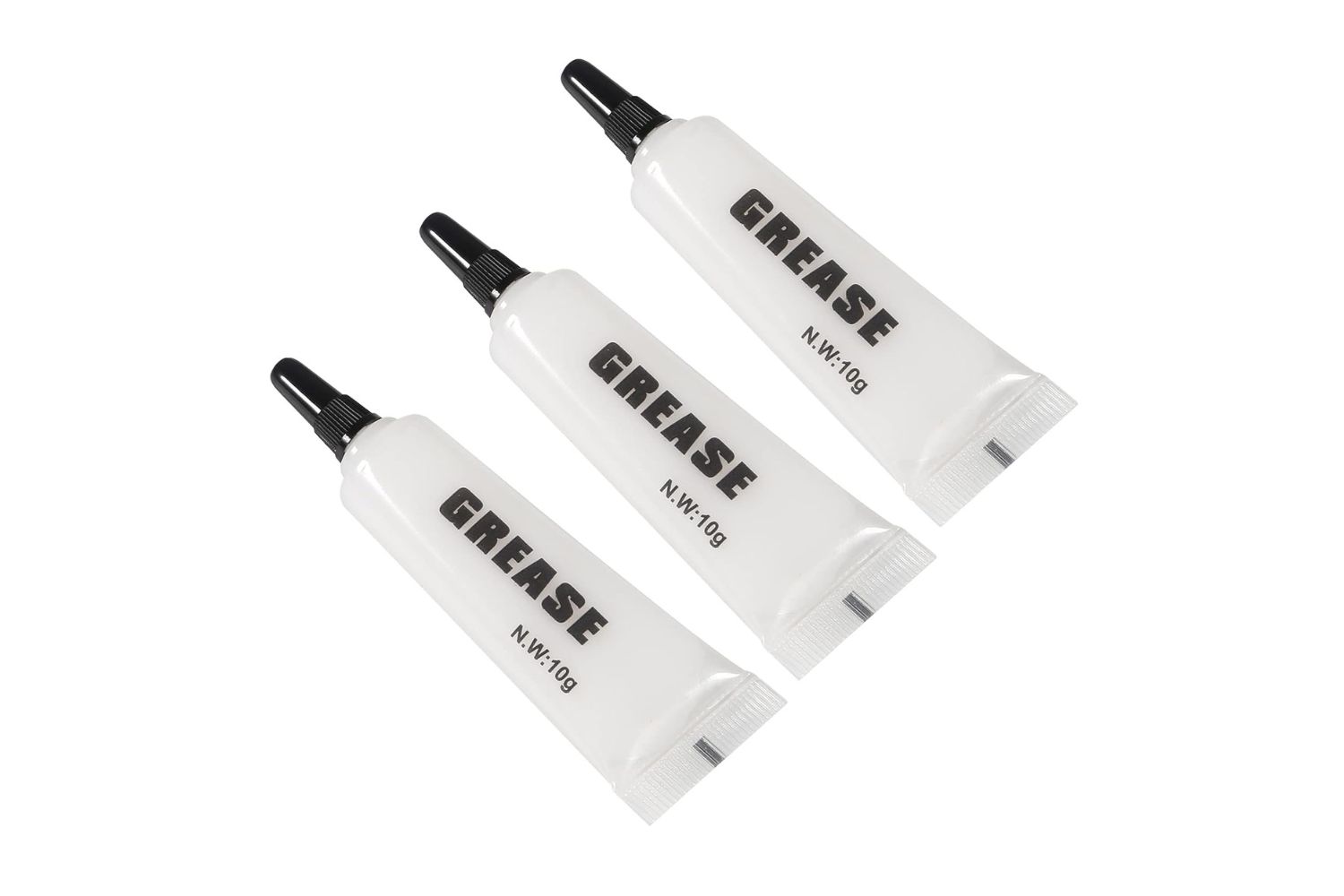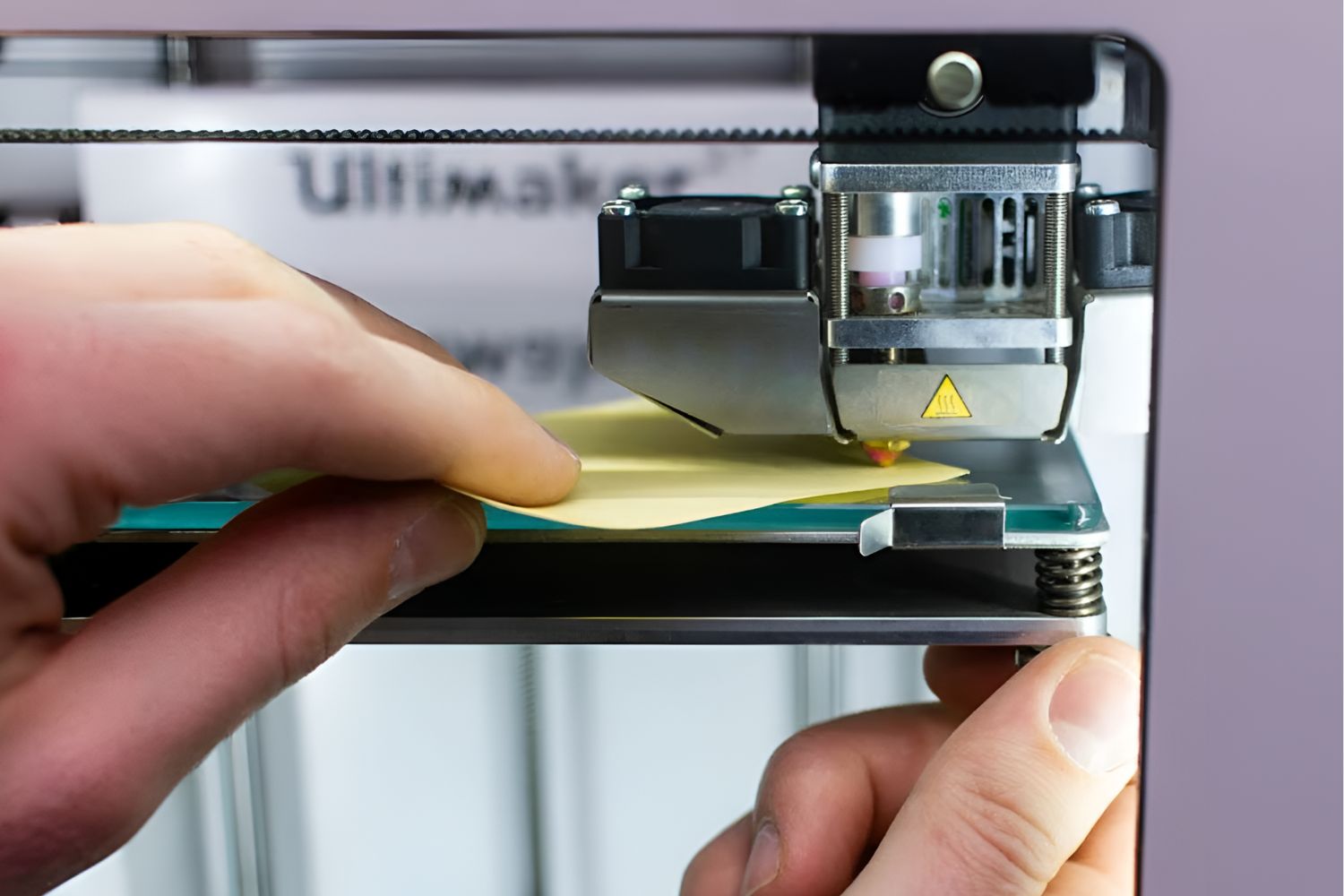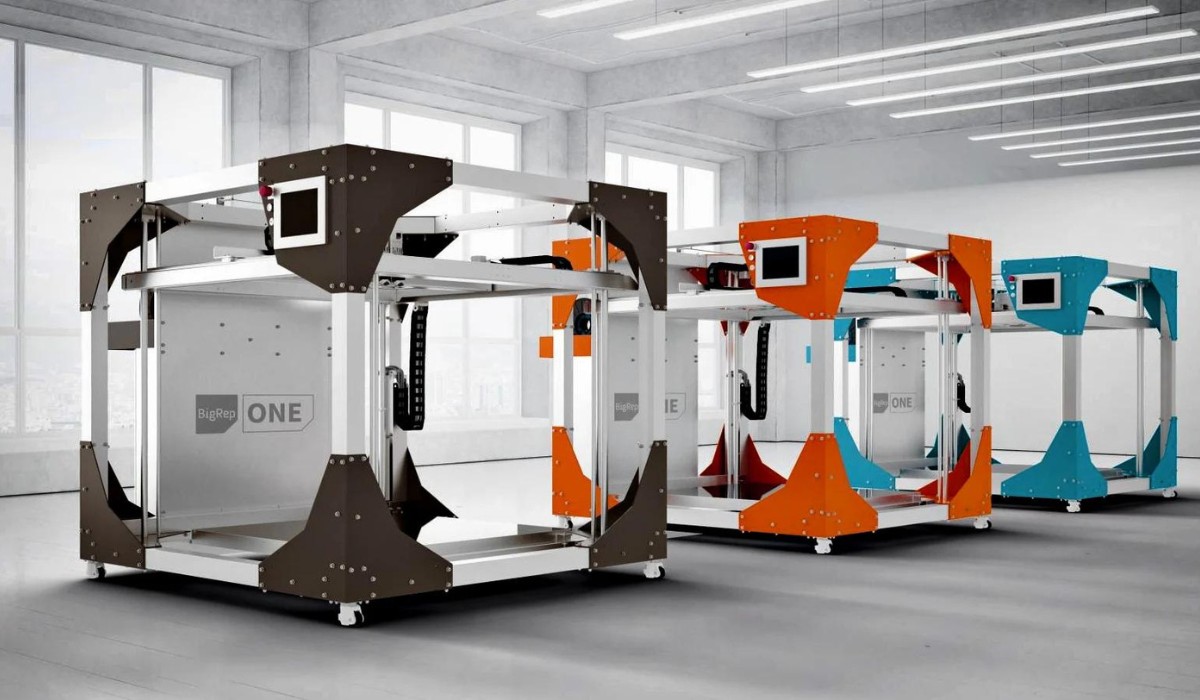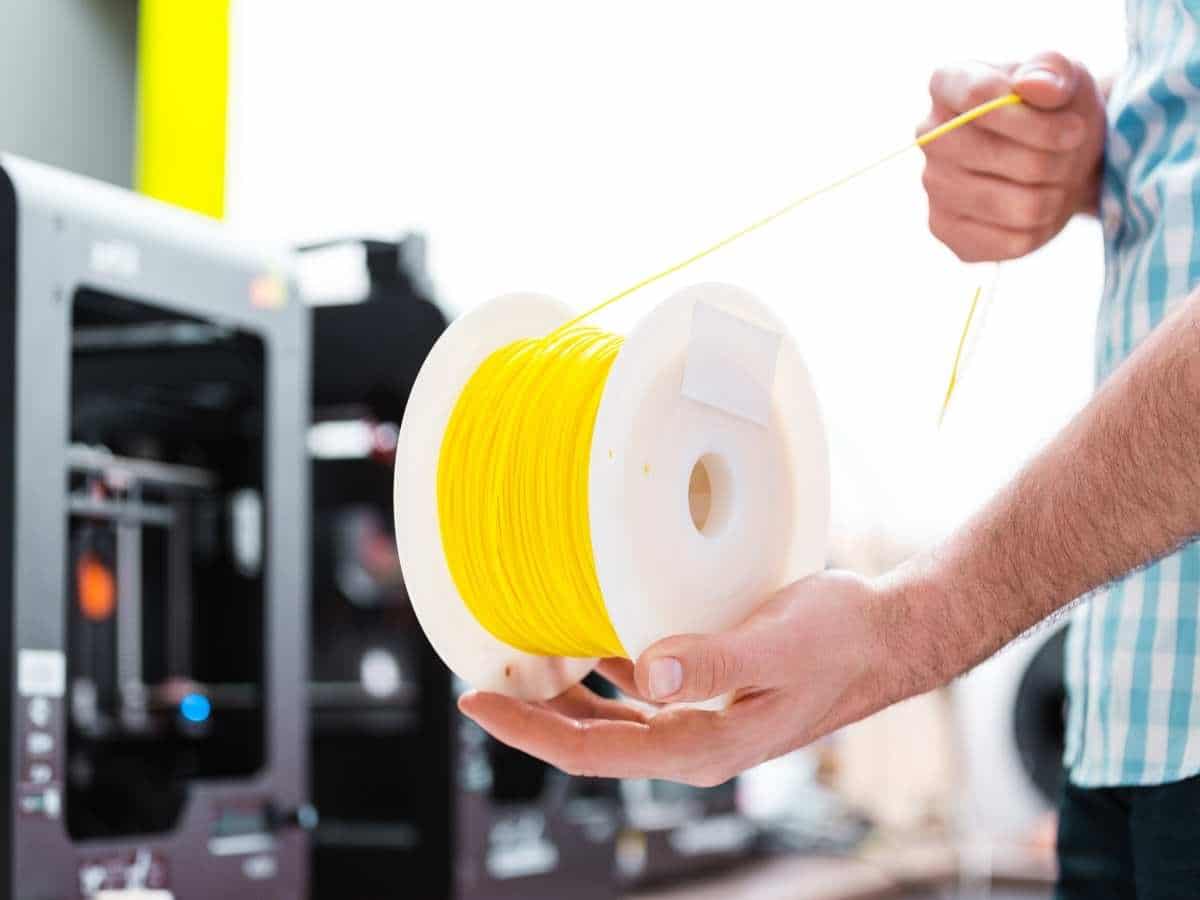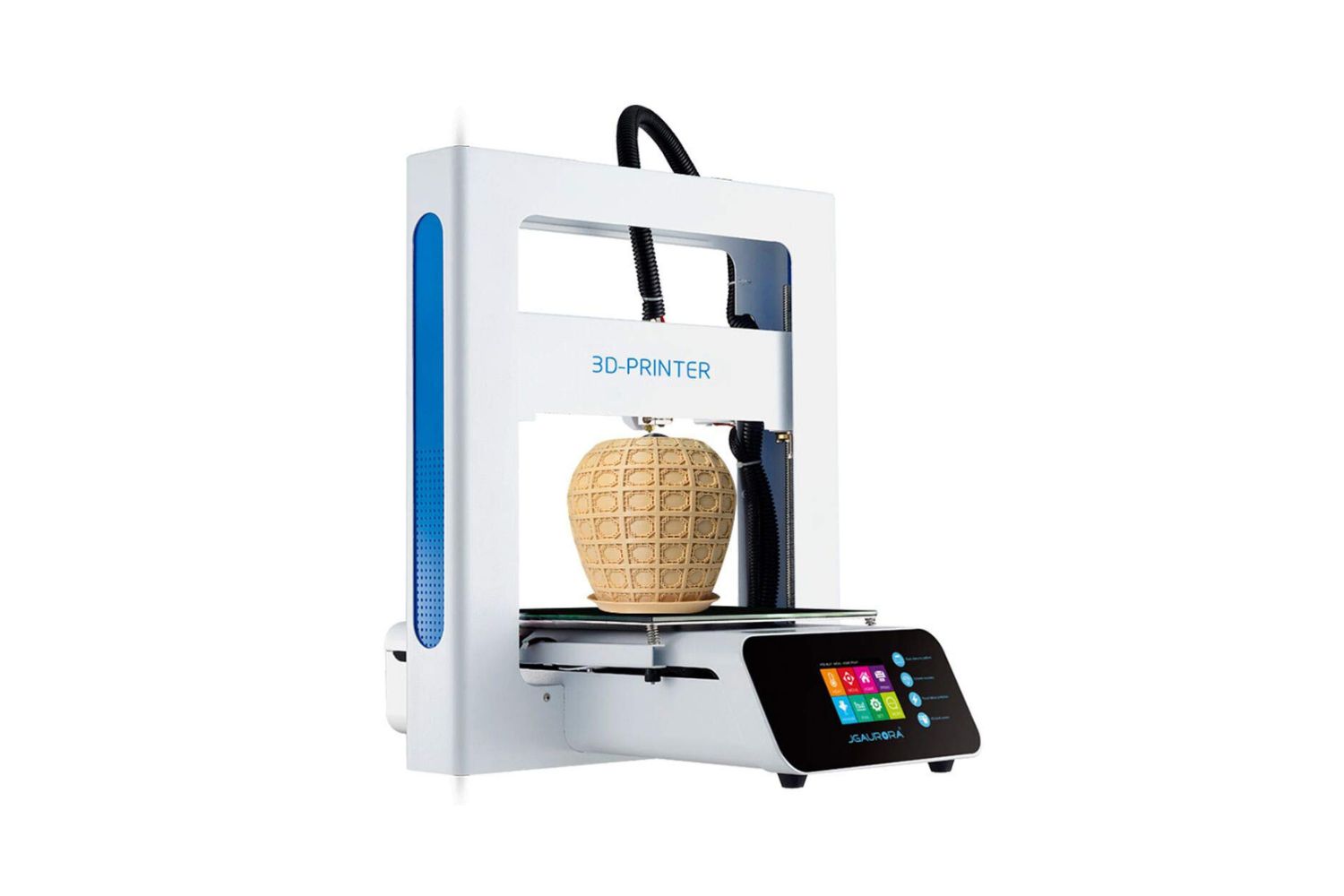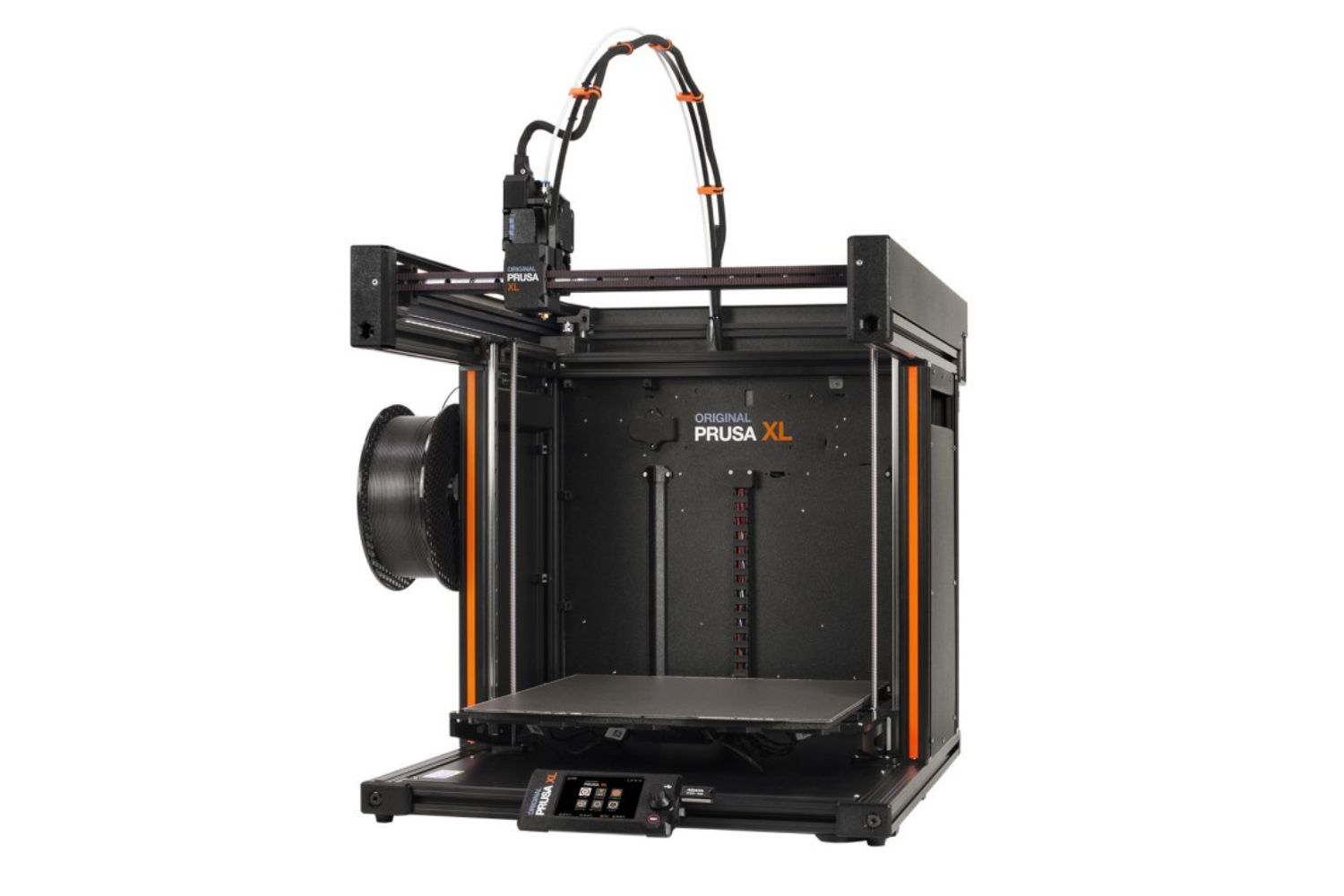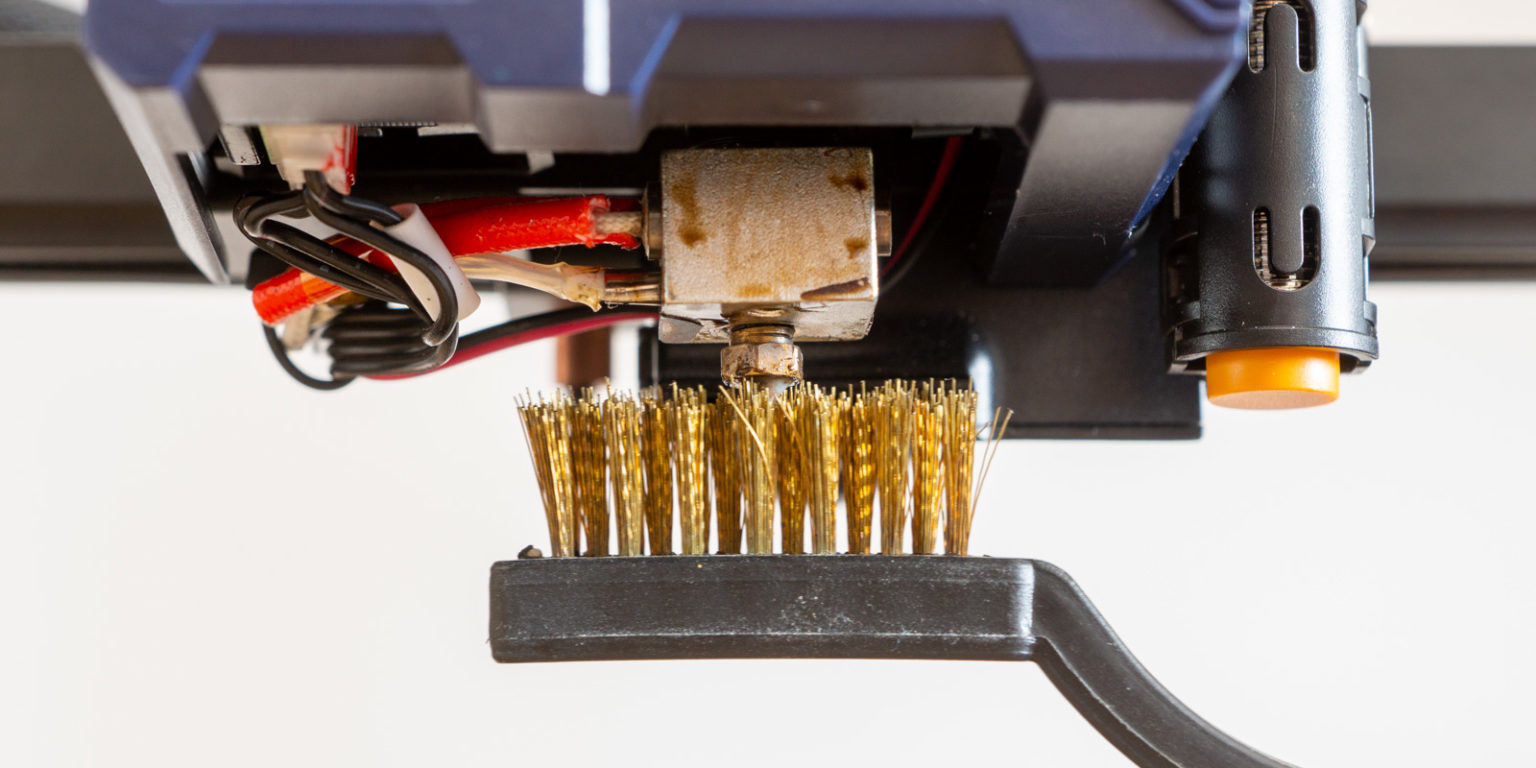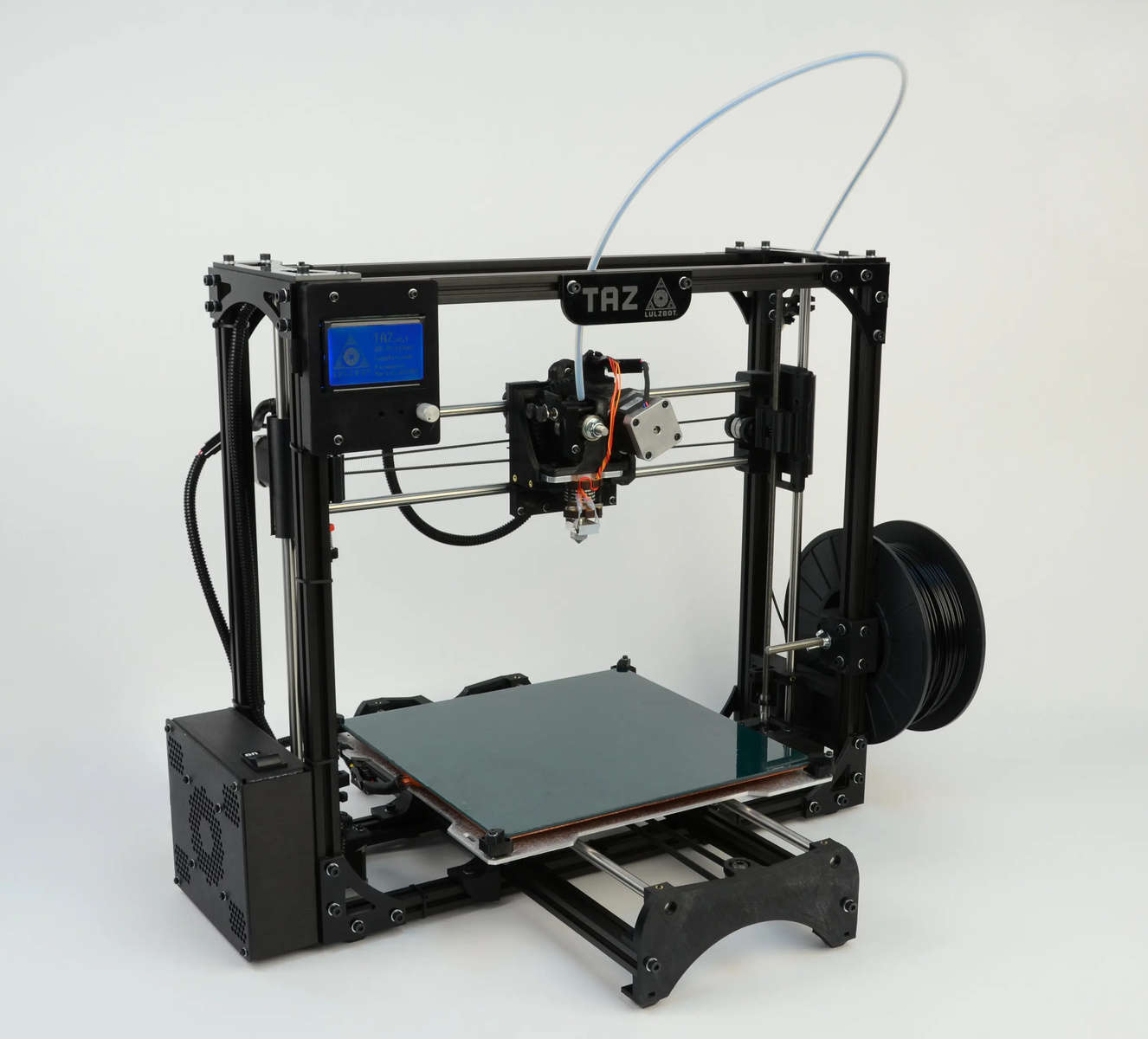Introduction
A 3D printer is a revolutionary tool that has transformed the way we create and manufacture objects. From complex prototypes to functional parts, 3D printers have become indispensable in various industries, including engineering, healthcare, and even household applications. However, one question that often arises is how long a 3D printer can run continuously without encountering any issues.
When it comes to the running time of a 3D printer, several factors come into play. These factors can affect the performance, reliability, and overall lifespan of the printer. In this article, we will explore the key factors that influence the running time of a 3D printer and provide tips on how to maximize its uptime.
Whether you’re a hobbyist or a professional user, understanding these factors can help you optimize your printing experience, reduce downtime, and ensure consistent and high-quality prints. So, let’s dive deeper into the various factors that impact the running time of a 3D printer.
Factors that Affect the Running Time of a 3D Printer
Several factors play a crucial role in determining the running time of a 3D printer. Understanding these factors can help you optimize your printing process and maximize the lifespan of your printer. Let’s take a closer look at each of them:
- Quality of the 3D printer: The build quality and components of the 3D printer can greatly affect its running time. High-quality printers are generally built to withstand continuous operation for extended periods, whereas lower-quality printers may have limitations in terms of durability and reliability.
- Type of materials used: The type of materials you use for printing can impact the running time. Different materials have different characteristics and require specific printing temperatures, speeds, and bed adhesion methods. Some materials may take longer to print than others, affecting the overall running time.
- Complexity and size of the print: Printing larger or more intricate objects typically takes more time compared to smaller and simpler prints. The complexity and size of the print directly impact the running time because it determines the number of layers, supports, and infill required.
- Print settings and speed: The settings you choose for your prints, such as layer height, infill density, and print speed, can significantly affect the running time. Higher quality prints with finer details and denser infill usually require more time to complete.
- Cooling and ventilation: Proper cooling and ventilation are essential for maintaining consistent print quality and preventing overheating of the printer components. Inadequate cooling can lead to print failures or compromised print quality, necessitating additional time for troubleshooting and reprints.
- Maintenance and upkeep: Regular maintenance of the printer, including cleaning, lubrication, and belt tensioning, is vital for avoiding unexpected breakdowns and prolonging the printer’s lifespan. Neglecting maintenance can lead to issues that require downtime for repairs.
- Power supply and reliability: The stability of the power supply is crucial for uninterrupted printing. Power fluctuations, surges, or outages can halt an ongoing print, resulting in wasted time and filament. Investing in a reliable power backup or surge protection system can mitigate these risks.
- Print bed and adhesion: Ensuring proper adhesion between the print bed and the printed object is essential for successful prints. Inadequate bed adhesion can result in warping, lifting, or failed prints, requiring reprints and increasing the overall running time.
- Filament availability and changes: Running out of filament in the middle of a print can be frustrating and time-consuming. Ensuring you have enough filament available and carefully monitoring its usage can help you avoid interruptions and unnecessary delays.
- Noise level and safety concerns: Some 3D printers can be noisy during operation, which can be disruptive in certain environments. Additionally, ensuring that the printer operates safely, without potential fire hazards or other safety issues, is important for uninterrupted and worry-free printing.
- Additional features and automation: Advanced features like automatic bed leveling, filament sensors, and remote monitoring can enhance the printing experience and reduce manual intervention. These features can save time and effort during setup and help optimize the running time of the printer.
- Environmental conditions: Factors like temperature, humidity, and airflow in the printing environment can affect print quality and the overall running time. Maintaining a stable and controlled environment, free from dust or other contaminants, can help in achieving optimal printing results.
By considering these factors and taking appropriate measures, you can ensure that your 3D printer runs efficiently, maximizes uptime, and produces high-quality prints consistently.
Quality of the 3D Printer
The quality of the 3D printer itself is a crucial factor that determines its running time and performance. Investing in a high-quality printer can significantly impact the longevity and reliability of the machine.
High-quality 3D printers are built with durable components and robust construction, which ensures their ability to handle extended periods of continuous operation. These printers are designed to withstand the stresses and demands of frequent printing without compromising the print quality or risking hardware failures.
On the other hand, lower-quality printers may have limitations in terms of durability and reliability. These printers may have cheap components that are more prone to wear and tear, leading to frequent breakdowns and shorter lifespan. Such printers may require more downtime for repairs, negatively impacting their running time.
When selecting a 3D printer, it’s important to consider well-known brands with a reputation for producing reliable and high-quality machines. Read reviews and gather information about the printer’s build quality, customer support, and user experiences to make an informed decision.
Additionally, it’s worth noting that high-quality printers often come with better firmware and software support, which can enhance performance and ease of use. Manufacturers of reputable printers also release regular firmware updates to address any bugs or improve functionality, ensuring that your printer remains in optimal condition.
While high-quality printers typically come with a higher price tag, the investment is worthwhile if you plan to use your printer frequently and for extended periods. The increased reliability and longevity of a quality printer can save you time, money, and frustration in the long run.
Remember to consider the quality of the 3D printer as a fundamental factor not only for its running time but also for the overall printing experience and outcome. Investing in a reliable and durable printer will set the foundation for successful and uninterrupted 3D printing.
Type of Materials Used
The type of materials used for 3D printing plays a significant role in the running time of a printer. Different materials have varying properties and requirements, which can affect the overall printing speed and duration.
Each material used for 3D printing has specific characteristics, such as melting temperature, flowability, and cooling time. These factors directly impact the printing speed and the time it takes for each layer to solidify before the next layer can be added.
Some materials, like PLA (polylactic acid), are known for their relatively low melting temperature and fast cooling time, making them suitable for quick and efficient prints. On the other hand, materials like ABS (acrylonitrile butadiene styrene) require higher temperatures and longer cooling periods, thereby increasing the overall printing time.
It’s important to note that the type of material also influences the printing settings you need to select. For example, different materials may require adjustments in the print temperature, nozzle size, and print speed. These settings directly impact the printing time and ultimately affect the overall running time of the printer.
Furthermore, some materials may require additional features or upgrades in the printer to achieve better results. Certain filaments, like flexible materials or abrasive composites, may require specialized extruders or nozzles, which can affect the overall printing time and require additional setup and calibration.
When choosing materials for your 3D prints, it’s crucial to consider both the properties of the materials and your specific printing needs. Assess the requirements of your print project, such as strength, heat resistance, or flexibility, and select materials accordingly. This way, you can optimize the running time of your printer by choosing materials that are suited for your desired print quality and speed.
Additionally, it’s essential to familiarize yourself with the specific printing guidelines and recommendations for each material. Manufacturers often provide guidelines regarding print settings, such as print temperature ranges or print speeds, which can help you achieve optimal results and minimize print failures.
By understanding and choosing the right materials for your prints, you can effectively manage the running time of your 3D printer and achieve high-quality results without unnecessary delays.
Complexity and Size of the Print
The complexity and size of a 3D print have a direct impact on the running time of a 3D printer. Prints that are larger or more intricate tend to require more time compared to smaller and simpler prints.
Complexity refers to the level of detail, intricacy, or number of features in a design. Prints with intricate designs, fine details, or complex geometries often require more time per layer to ensure precise and accurate printing. This is because the printer needs to slow down to navigate intricate parts of the model or to properly deposit support structures where needed.
Similarly, the size of the print can significantly affect the running time. Larger prints naturally require more time to complete because they consist of more layers and require a larger volume of material to be extruded. Printing larger objects can also lead to higher chances of warping or other print failures, requiring additional troubleshooting and reprints.
It’s important to consider the complexity and size of a print when estimating the running time and planning your printing schedule. Complex or large prints may require longer print times, meaning you need to allocate sufficient time to complete them without interruptions.
Additionally, optimizing the print settings for complex or large prints can help reduce the overall running time. Adjusting the layer height, infill density, or print speed can impact the time it takes to complete each layer and the overall printing process. However, it’s crucial to find the right balance between speed and print quality to ensure that intricate details are adequately captured.
Furthermore, it’s worth noting that complex prints may require supports or rafts to ensure proper printing and prevent part distortion. These additional structures can add to the overall printing time, especially when they need to be removed or cleaned up after the print is complete.
By considering the complexity and size of your prints, you can effectively manage the running time of your 3D printer. Plan ahead, allocate sufficient time for longer prints, and optimize the settings to achieve the desired balance between print quality and speed.
Print Settings and Speed
The print settings and speed chosen for a 3D print have a direct impact on the running time of the printer. These settings determine how the printer operates and how quickly each layer is printed.
Print settings such as layer height, infill density, and print speed play a crucial role in determining the running time of a print. Higher quality prints with finer details and denser infill generally require more time to complete. This is because each layer needs to be printed with precision and the printer may need to slow down to achieve the desired level of detail.
When it comes to layer height, a smaller layer height results in a more detailed print but also increases the number of layers required, thus increasing the overall print time. On the other hand, larger layer heights reduce the overall print time but can compromise the level of detail and surface smoothness.
The infill density determines the amount of support structure inside the print. Higher infill densities provide stronger and more solid prints, but they also require more time and material to complete. Conversely, lower infill densities can speed up the print time but may result in reduced strength and structural integrity.
Print speed is another critical factor that affects the running time. Increasing the print speed can significantly reduce the overall print time, but it may also compromise the accuracy and quality of the print. Balancing print speed with print quality is essential to ensure successful and high-quality prints.
It’s important to adjust these print settings based on the specific requirements of your print. For simple prints where speed is the priority, increasing the layer height, reducing the infill density, and adjusting the print speed can help achieve faster print times. However, for prints that require intricate details or structural strength, slower print speeds and higher print settings may be necessary.
It’s also worth noting that some slicing software allows for variable print settings throughout the print. This means you can adjust the print settings for specific sections of the print, further optimizing the overall running time and print quality.
By understanding the impact of print settings and speed on the running time, you can optimize your printing process for efficiency and quality. Experimenting with different settings and finding the right balance between speed and print quality will help you achieve the desired results while minimizing unnecessary printing time.
Cooling and Ventilation
Proper cooling and ventilation are essential considerations when it comes to the running time of a 3D printer. Maintaining a suitable temperature and ensuring adequate airflow around the printer can greatly impact print quality and avoid potential issues that could increase printing time.
During the 3D printing process, it is crucial for each printed layer to cool down sufficiently before the next layer is added. Insufficient cooling time can result in excessive heat building up in the print, leading to deformations, warping, or even failed prints. Proper cooling not only improves print quality but can also help reduce the overall printing time.
Many 3D printers are equipped with cooling fans or dedicated cooling systems to facilitate effective layer cooling. These fans help dissipate heat from the printed object, allowing each layer to solidify quickly and maintain its shape. Ensuring that these cooling systems are properly functioning and unobstructed is vital for consistent and efficient printing.
In addition to cooling, ensuring adequate ventilation of the printing area is important. Printing generates fumes and odors, especially when using certain filaments, such as ABS. Proper ventilation helps remove these fumes and prevents them from accumulating in the printing environment. Apart from health considerations, good ventilation can also prevent potential issues related to excessive heat, such as printer components overheating or the print surface warping.
When setting up your 3D printer, ensure that it is placed in a well-ventilated area with sufficient air circulation. If your printer doesn’t have built-in ventilation or you are printing in an enclosed space, consider using additional ventilation options like exhaust fans or opening windows to allow fresh air in and remove any accumulated fumes.
Regularly check and clean the cooling fans to ensure optimal performance. Clogged or dusty fans can hinder proper cooling and result in longer print times or compromised print quality. Clearing any debris or dust from ventilation openings is also important to maintain proper airflow around the printer.
By paying attention to cooling and ventilation, you can optimize the running time of your 3D printer and enhance the overall printing experience. Adequate cooling ensures successful print layer adhesion and minimizes the risk of print failures, while proper ventilation promotes a healthier and safer printing environment.
Maintenance and Upkeep
Regular maintenance and upkeep of your 3D printer can have a significant impact on its running time and overall performance. Proper care and attention to maintenance tasks can help prevent unexpected breakdowns, minimize print failures, and prolong the lifespan of your printer.
One essential maintenance task is keeping the printer clean and free from dust and debris. Accumulated dust can clog the extruder nozzle or other critical parts, leading to print quality issues and potential damage to the printer. Regularly clean the printer components, such as the extruder, print bed, and belts, to keep them in optimal condition.
Lubrication is another crucial aspect of printer maintenance. Keeping the moving parts well-lubricated, such as the rods and belts, helps maintain smooth and accurate movements, reducing the risk of layer shifting or misalignment during prints. Consult your printer’s user manual to determine the appropriate lubrication points and recommended lubricants.
Ensuring proper belt tension is vital for smooth and precise movements. Loose or overly tight belts can result in print inaccuracies and affect the overall print quality. Regularly check the belt tension and make necessary adjustments to maintain optimal performance.
Regularly calibrate your printer to ensure accurate and consistent prints. Calibration involves adjusting various settings, such as the bed leveling or extruder offset, to ensure that the printer is operating in the correct alignment. Proper calibration can help minimize print failures and the need for reprints, ultimately reducing the overall running time of the printer.
Checking and tightening the screws and fasteners of your printer is important to prevent loose connections that could lead to print inaccuracies or hardware failures. Over time, vibrations and movements during printing can cause screws to loosen, so it’s advisable to perform routine checks and tighten them, as needed.
Additionally, keeping firmware and software up to date is essential for maintaining optimal performance. Manufacturers regularly release firmware updates that improve printer functionality, fix bugs, and introduce new features. Staying up to date with these updates can help address any potential issues and improve print quality.
By incorporating regular maintenance tasks into your printing routine, you can minimize unexpected issues and maximize the running time of your 3D printer. Proper maintenance not only enhances print quality and reduces print failures but also increases the overall reliability and lifespan of your printer.
Power Supply and Reliability
The power supply and its reliability are significant factors that influence the running time of a 3D printer. Issues with power supply can lead to interruptions in the printing process, potentially resulting in wasted time, filament, and failed prints.
It is crucial to ensure that your 3D printer is connected to a reliable power source. Power fluctuations, surges, or outages can disrupt the printing process, leading to potential print failures and downtime. Investing in a stable and reliable power supply and surge protection system can help mitigate these risks and improve the overall stability of your printer’s operation.
Using a surge protector or an uninterruptible power supply (UPS) can help safeguard your 3D printer from sudden power disturbances. These devices are designed to protect your equipment from power spikes or outages, allowing for uninterrupted printing even during brief power interruptions.
Inspecting the power cables and connections is also essential to ensure reliable and consistent power supply. Loose or damaged connectors can cause intermittent power loss or fluctuations, affecting the printing process. Regularly check and replace any damaged cables or connectors to maintain a reliable power connection.
It is recommended to have a backup power plan in place, especially for long or critical prints. In the event of a power outage, having a backup power source, such as a generator or an additional UPS, can prevent print failures and minimize the impact on the running time. Assessing the importance of the print job and having contingency measures can save you time and prevent potential frustrations.
Furthermore, power-related issues can also occur within the printer’s internal components. Faulty power supply units or overheating components can lead to unexpected shutdowns or print failures. Regularly inspecting and maintaining the internal power components can help identify and resolve any potential issues before they cause disruptions.
By ensuring a reliable power supply and taking necessary precautions, you can minimize the risk of power-related interruptions and maximize the running time of your 3D printer. A stable power connection helps maintain smooth and continuous printing, resulting in efficient use of time and resources.
Print Bed and Adhesion
The print bed and its adhesion to the printed object are critical factors that can affect the running time of a 3D printer. Proper adhesion ensures that the printed object stays securely in place during the printing process, preventing potential print failures or misalignment.
The type of print bed surface can greatly impact the adhesion of the printed object. Different materials, such as glass, PEI sheets, or specialized build surfaces, offer varying levels of adhesion for different types of filaments. It’s important to choose the appropriate print bed surface based on the material you are using and the required adhesion level.
One common method to improve adhesion is to use a heated print bed. Many 3D printers come equipped with heated beds that allow for optimal bed temperature during printing. Heating the bed helps improve the bonding between the print bed surface and the first layer of the print, enhancing overall adhesion. This is particularly important when using materials such as ABS, which require higher bed temperatures for better adhesion.
Additionally, applying adhesion aids such as adhesive sprays, tape, or glue sticks can further improve print bed adhesion. These aids create a thin layer between the print bed and the printed object, promoting stronger adhesion. Experimenting with different adhesion aids and finding the one that works best for your specific printer and filament can help minimize print failures and optimize running time.
Ensuring a level print bed is crucial for proper adhesion and successful prints. A bed that is not leveled can lead to uneven deposition of subsequent layers, resulting in print failures or misalignment. Regularly check and adjust the level of your print bed to maintain optimal printing conditions.
Proper cleaning of the print bed is also essential to maintain good adhesion. Dust, oils, or residue from previous prints can hinder adhesion and impact print quality. Clean the print bed surface regularly and remove any debris or residues to ensure consistent and reliable adhesion.
Some printers offer additional features such as automatic bed leveling or mesh bed compensation. These features can improve bed adhesion by compensating for any slight variations or imperfections in the bed level, ensuring that the first layer adheres properly.
By paying attention to the print bed and its adhesion, you can optimize the running time of your 3D printer. Ensure a suitable print bed surface, maintain a level bed, and clean it regularly to maximize adhesion and reduce the chances of print failures or delays.
Filament Availability and Changes
Filament availability and the need for filament changes can impact the running time of a 3D printer. Ensuring a sufficient supply of filament and managing filament changes effectively are important considerations for minimizing unnecessary downtime and optimizing the printing process.
Having an adequate quantity of filament available before starting a print job is crucial. Running out of filament in the middle of a print can lead to interruptions and wasted time. To avoid this, always check the filament spool’s remaining amount and estimate whether it is enough for the entire print duration.
When a filament change is necessary, it is important to plan and execute the change smoothly to minimize downtime. Preparing the new filament by cutting and loading it onto the printer beforehand can save time during the changeover. Clear instructions or labels on the printer can help guide the process and ensure a seamless transition.
Some printers offer features like filament sensors that detect when a spool is about to run out. These sensors can pause the print and notify the user, allowing for timely intervention and filament change. Investing in a printer with filament sensor capabilities can help prevent print failures and reduce overall running time.
Consistency in using the same filament brand and type can also contribute to efficient printing. Different filament brands may have variations in properties like melting temperature and flow characteristics. Switching between filaments from different brands or types can require adjustments to print settings, potentially prolonging the print setup and increasing the running time.
Moreover, it is important to store unused filament properly to maintain its quality and avoid moisture absorption. Moisture can affect filament properties and cause print quality issues. Proper storage in airtight containers or desiccant bags can help preserve filament quality and prevent the need for reprints.
Additionally, some printers offer multi-filament capabilities, allowing for simultaneous printing with multiple filaments. This feature can reduce the need for filament changes during a print and save time. It is particularly useful for prints that require different colors or materials.
By ensuring filament availability and managing filament changes effectively, you can minimize unnecessary downtime during printing and optimize the running time of your 3D printer. Planning ahead, using consistent filament, and utilizing features like filament sensors or multi-filament capabilities can help streamline the printing process and enhance overall efficiency.
Noise Level and Safety Concerns
The noise level and safety concerns associated with 3D printers can influence the running time and overall user experience. It is important to consider these factors to ensure a comfortable and safe printing environment.
One common characteristic of 3D printers is the noise they produce during operation. The motors, fans, and extruders can generate significant noise levels, which can be bothersome, especially in quiet environments or when the printer is being used for extended periods. It is worth considering the noise level of the printer and its impact on the surroundings, including neighboring spaces or individuals.
There are several ways to mitigate the noise generated by a 3D printer. One option is to place the printer in an enclosed space or a dedicated room to isolate the noise. This can help minimize the impact on the surrounding environment. Another option is to invest in printers specifically designed for reduced noise emissions, such as models with built-in noise-dampening features or silent stepper motors.
In addition to noise concerns, ensuring safety during 3D printing is of utmost importance. 3D printers involve high temperatures, moving parts, and electrical components, which can pose potential safety risks if not properly managed.
It is essential to follow safety guidelines and take necessary precautions to prevent accidents or injuries. Keep the printer in a stable location where it is unlikely to be bumped or knocked over during operation. Ensure that the printer is placed on a non-flammable and heat-resistant surface to prevent the risk of fire or heat damage.
Regularly inspect the printer’s cables and connections for signs of wear or damage. Frayed or damaged cables can increase the risk of electrical hazards. It is advisable to replace any damaged cables or connectors promptly.
Ensure that the printer is located in a well-ventilated area to prevent the accumulation of fumes emitted by certain filaments. If the printer operates in an enclosed space, consider using additional ventilation or air filtration systems to improve air quality and reduce potential health risks.
Moreover, it is important to have appropriate fire safety measures in place. Installing smoke detectors or fire extinguishers near the printer can provide quick response in case of emergencies. Having a plan and understanding the proper actions to take in case of a fire or other safety incidents is crucial for a safe printing environment.
By addressing noise concerns and prioritizing safety measures, you can create a more pleasant and secure 3D printing environment. Minimizing noise disturbance and ensuring proper safety precautions contribute to a better overall experience and reliable running time for your 3D printer.
Additional Features and Automation
Additional features and automation capabilities in 3D printers can significantly impact the running time and overall efficiency of the printing process. These features streamline workflows, minimize manual intervention, and enhance the user experience.
One notable feature is automatic bed leveling, which eliminates the need for manual adjustment of the print bed. Automatic bed leveling ensures that the print bed is level and properly aligned, resulting in improved print quality and reduced setup time. This feature removes the need for time-consuming manual bed leveling procedures and increases the printer’s overall productivity.
Another helpful feature is filament sensors, which detect when the filament is running low or has run out. These sensors pause the print and notify the user, allowing for timely intervention and filament change. This prevents print failures due to running out of filament and minimizes unnecessary downtime.
Remote monitoring and control capabilities are becoming increasingly common in 3D printers. These features allow users to monitor and control the printer’s progress from a distance, using a computer or smartphone. Remote monitoring enables users to keep track of the printing process, detect any issues in real-time, and make necessary adjustments without physically being present, saving time and increasing convenience.
Some printers also offer automatic filament loading and unloading mechanisms, which simplify the filament changing process. These features enable smoother and faster filament transitions, reducing downtime and optimizing the running time of the printer.
Multi-extruder setups provide the ability to print with multiple filaments simultaneously. This feature is particularly useful for prints that require different colors or materials. With multiple extruders, users can minimize filament changes and complete complex prints with different elements more efficiently.
Printing software advancements have also brought about valuable automation features. For instance, features like print queue management allow users to schedule multiple prints in sequence, optimizing the printing time and reducing manual intervention.
Integrating these additional features and automation capabilities can significantly improve the running time of a 3D printer. By reducing manual tasks, streamlining processes, and enabling remote monitoring and control, these features enhance productivity and overall efficiency, allowing users to maximize the potential of their printer.
Environmental Conditions
The environmental conditions in which a 3D printer operates can have an impact on its running time and the quality of prints produced. Factors such as temperature, humidity, and airflow play a significant role in achieving optimal printing results.
Temperature control is crucial for successful 3D printing. Extreme temperatures, whether too hot or too cold, can affect the print quality and result in failed prints. Most printers have recommended operating temperature ranges, and it’s important to ensure that the ambient temperature falls within these ranges. Keeping the printing environment at a stable and controlled temperature can help maintain consistent print quality and reduce the risk of print failures due to material warping or improper layer adhesion.
Humidity can also impact 3D printing, particularly when using filament materials that are sensitive to moisture absorption, such as nylon or certain types of resin. Moisture absorbed by these filaments can affect print quality and lead to issues like poor layer adhesion or bubbling during printing. Proper filament storage, such as using airtight containers or desiccant packs, can help prevent moisture absorption and maintain filament quality. Additionally, printing in a dry environment or using a filament dryer can also enhance print quality and reduce the chances of print failures.
Adequate airflow is necessary during the printing process to ensure proper cooling of printed layers and prevent overheating of components. Insufficient airflow can impact the cooling process, resulting in print defects or increased print times. It is important to ensure that there is sufficient ventilation in the printing area to maintain proper air circulation and prevent localized overheating.
Another environmental consideration is dust and debris in the printing environment. Dust particles can settle on the print bed or nozzle and affect print quality. It is essential to keep the printing area clean and free from dust or other contaminants that can interfere with the printing process.
Furthermore, vibrations and external disturbances can impact the accuracy and stability of the printer during operation. Placing the printer on a stable surface away from excessive vibrations or movements can help maintain consistent print quality and minimize potential print failures.
By optimizing the environmental conditions in which a 3D printer operates, users can enhance the running time and the quality of prints produced. Keeping the temperature, humidity, and airflow at suitable levels, along with maintaining a clean and stable printing environment, contributes to more reliable and efficient 3D printing.
How to Maximize the Running Time of Your 3D Printer
Maximizing the running time of your 3D printer is crucial for achieving efficient and productive 3D printing sessions. By following these tips, you can optimize the performance of your printer and make the most out of your printing time:
- Invest in a high-quality printer: Choosing a reliable and well-built 3D printer can ensure longer running times and minimize downtime due to hardware failures.
- Optimize print settings: Adjusting print settings like layer height, infill density, and print speed can impact the running time. Fine-tuning these settings based on the requirements of your print can help achieve a balance between speed and print quality.
- Maintain the printer regularly: Performing regular maintenance tasks like cleaning, lubricating, and calibrating the printer helps prevent unexpected breakdowns and ensures consistent performance.
- Use high-quality filament: Using high-quality filament that is compatible with your printer can lead to better print quality, reducing the need for reprints and saving time.
- Ensure proper bed adhesion: Leveling the print bed, using appropriate adhesion aids, and ensuring proper cooling and ventilation contribute to successful prints, minimizing print failures and delays.
- Plan for filament changes: Estimate the required filament amount for a print job, keep an adequate supply of filament, and plan filament changes to minimize interruptions during longer prints.
- Utilize automation features: Take advantage of features like automatic bed leveling, filament sensors, or remote monitoring to streamline workflows and reduce manual intervention.
- Create an optimized printing environment: Maintain a stable and controlled temperature, minimize dust and debris, ensure proper ventilation, and keep the printer away from excessive vibrations to promote consistent print quality.
- Schedule prints efficiently: Arrange print jobs in a logical order, utilize print queue management features, and take advantage of overnight or unattended printing for longer or time-consuming prints.
- Keep firmware and software up to date: Regularly update your printer’s firmware and software to access the latest improvements, bug fixes, and new features that can enhance performance and reliability.
By implementing these strategies, you can optimize the running time of your 3D printer, reduce print failures, and increase your overall productivity. Consistency in maintenance, filament management, and print environment optimization will contribute to reliable and efficient 3D printing experiences.
Conclusion
Maximizing the running time of your 3D printer is crucial for efficient and productive 3D printing. By considering various factors such as the quality of the printer, the type of materials used, the complexity and size of prints, print settings and speed, cooling and ventilation, maintenance and upkeep, power supply and reliability, print bed and adhesion, filament availability and changes, noise level and safety concerns, additional features and automation, and environmental conditions, you can optimize your printing process and achieve high-quality results.
Investing in a high-quality printer, optimizing print settings, and properly maintaining the printer are fundamental steps in maximizing running time. Additionally, ensuring consistent filament availability, managing filament changes effectively, and utilizing automation features can help reduce downtime and increase productivity. Account for environmental conditions, such as temperature, humidity, airflow, and noise, to create an optimal printing environment that promotes successful prints.
By following these tips and strategies, you can achieve efficient and reliable 3D printing, reducing print failures, and maximizing overall productivity. Regular maintenance, careful filament management, optimized printing settings, and thoughtful utilization of additional features all contribute to a smoother and more successful printing experience.
With a well-optimized and well-maintained 3D printer, you can explore the endless possibilities of 3D printing and bring your ideas to life with confidence and efficiency.







